It is rainy season in the Philippines so lunch or dinner with hot soup, smoked or fried fish, and a side dish of chopped tomatoes and salted egg is a welcome treat, to be enjoyed with the whole family. Such a simple pleasure yet so satisfying!
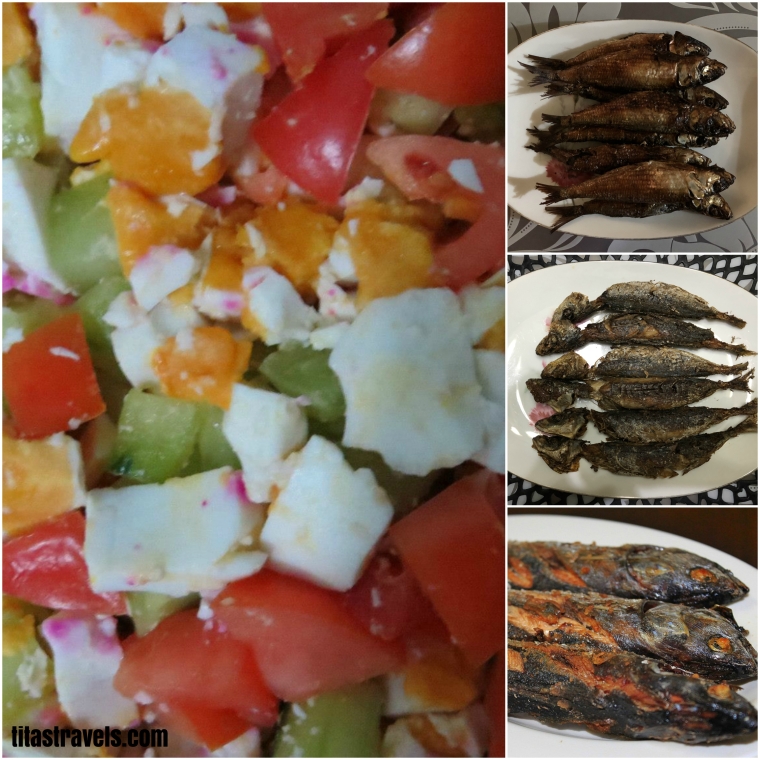 take your pick of fried fish (tinapa, galunggong or tulingan) with salted egg salad
take your pick of fried fish (tinapa, galunggong or tulingan) with salted egg salad
And talking about salted eggs, I recall with fondness Ang Tindahan ng Itlog ni Kuya at Iba Pa, located at Barangay Banca-Banca, along the National Highway of Victoria, Laguna. I buy salted eggs as “pasalubong1” for family and friends in Metro Manila during my visits.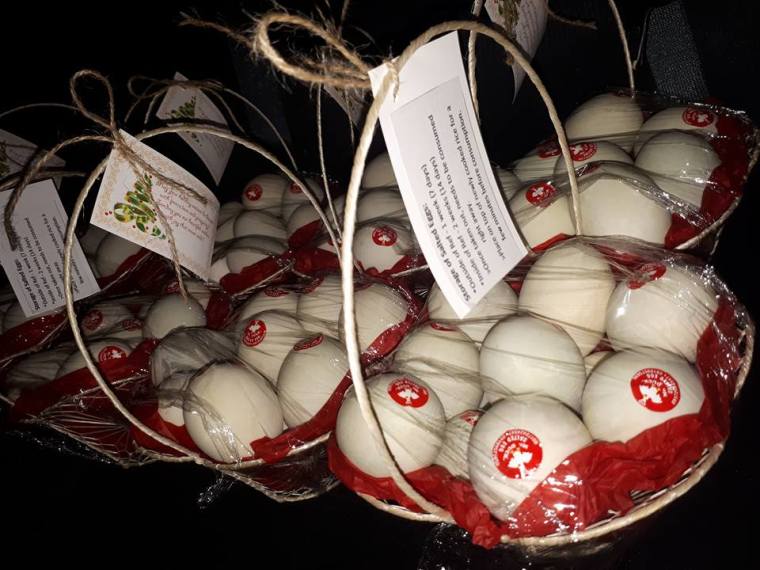 from the Facebook account, ItlogniKuya – Antipolo and San Pedro Laguna
from the Facebook account, ItlogniKuya – Antipolo and San Pedro Laguna
Now, when those who are not familiar with the store ask me where I bought the eggs, they smile at my answer, and ask me again because they thought I was joking, knowing my sense of humor!

Anyway, for those who are not familiar with this store and have not seen its feature in various television/radio shows (Agribusiness Talk Show, Everybody Happy, GoNegosyo, Kusina Master, My Puhunan, PinasSarap News TV, Radio Negosyo, Rated K, Something to Chew On, Umagang Kay Ganda, and Unang Hirit), read on. It was even awarded the Golden Globe Annual Award for Business Excellence on September 19, 2015.2
There is indeed a store called Itlog ni Kuya, for short, and the salted egg they sell is so delightful!
interior of Victoria, Laguna Store
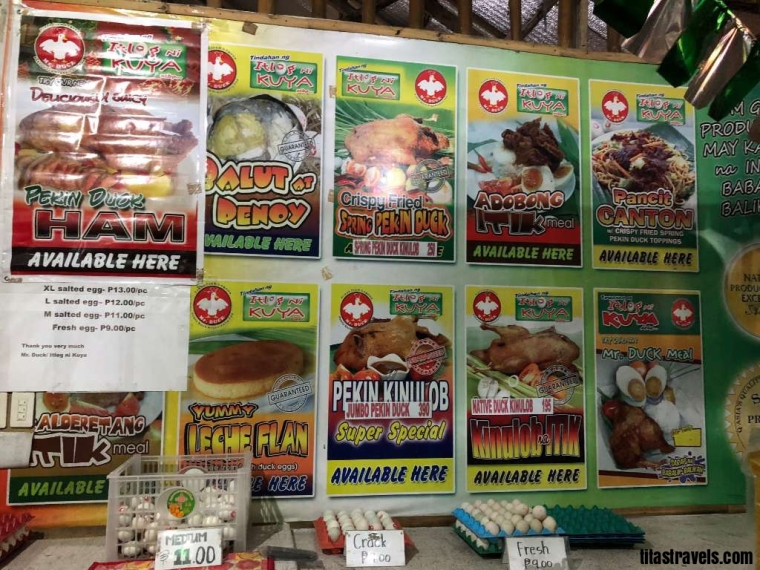 Items offered by the Victoria, Laguna Store
Items offered by the Victoria, Laguna Store
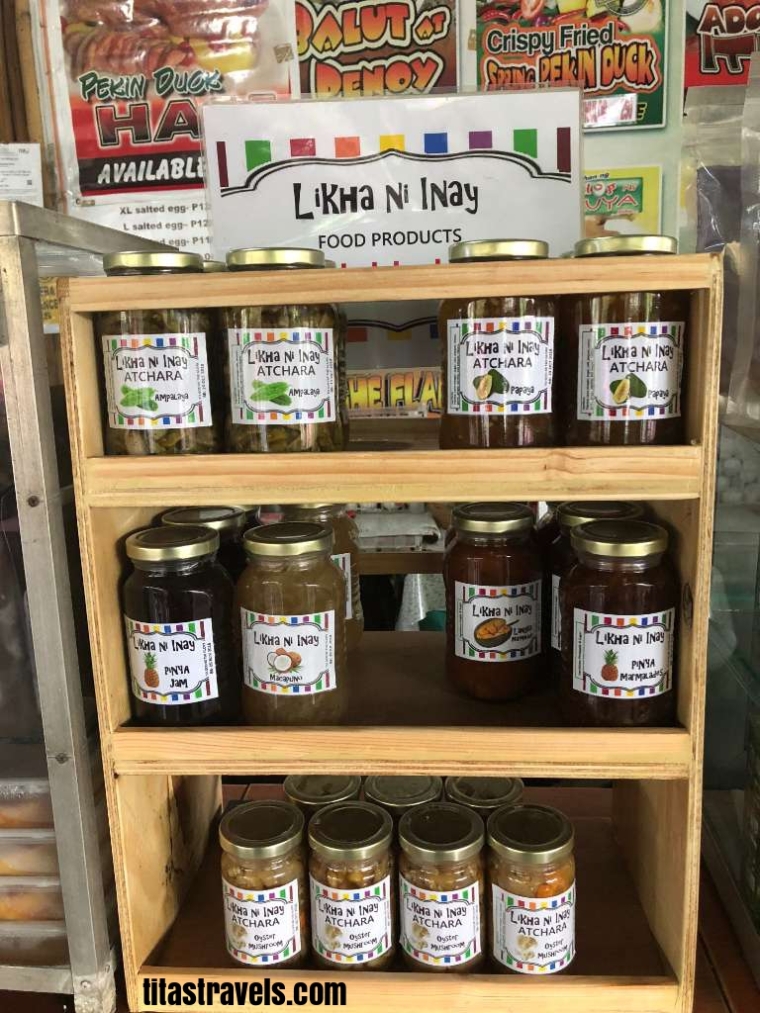 Other goodies offered by the Victoria, Laguna store, open from 8:00 am till 8:00 pm daily
Other goodies offered by the Victoria, Laguna store, open from 8:00 am till 8:00 pm daily
Personally, there are four reasons why I like its salted egg. First, the egg is processed more hygienically in a common traditional method and the egg shell is not colored (unlike what has been the widespread practice in early times using a dark pink or red dye). I appreciate this feature as my hands will not be stained when I cut the egg in half.
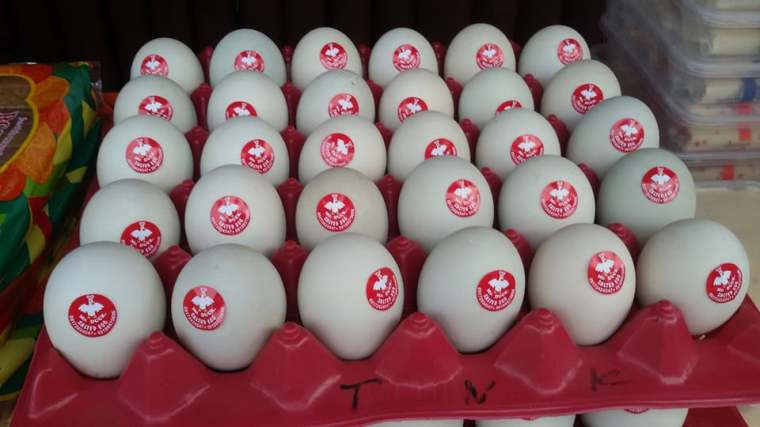 from the Facebook account, Tindahan ng ItlogniKuyaLucena branch
from the Facebook account, Tindahan ng ItlogniKuyaLucena branch
The resulting salted egg has a plain white shell with a small sticker printed with the Itlog ni Kuya logo. Do not be misled by its simple exterior marking; the egg inside has a high quality which will definitely satisfy you.
Second, this salted egg is organic. The ducks are fed with rice bran, fishes, sweet potatoes, and fresh water shells (called “tulya”).2 Natural products like probiotics are used; no antibiotics are used.
Third, the egg yolk has a very desirable dark orange color with a pleasing grainy texture and the much sought after characteristic, the oily portion.
Fourth, the flavor is just right, it is agreeably salty and the yolk’s grainy texture and oiliness are so enjoyable.
Personally, I mix chopped salted eggs with chopped ripe tomatoes but when I find pako3 in the wet market, I see to it that I make Pako Salad (blanched pako, chopped salted eggs, tomatoes and onions, served with a vinegar dressing or one made from calamansi, honey and fish sauce).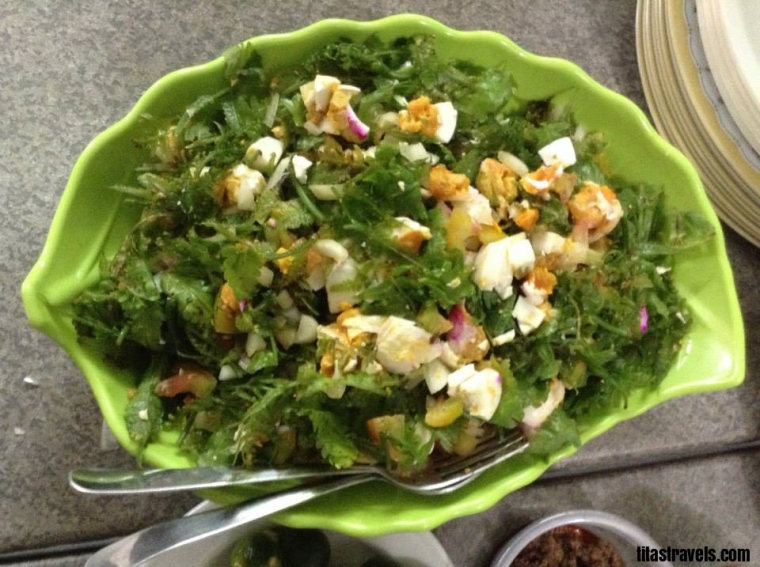
At this point, allow me to tell you how this store started. Victoria, Laguna, is the town between Calauan and Pila (when you are cruising southward along the National Highway, coming from SLEX-Calamba exit), about 90 km south of Manila. It is known as the Duck Raising Capital of the Philippines, according to the Wikipedia page “Victoria, Laguna”.4 Thus, it is no surprise that Itlog ni Kuya started in this town.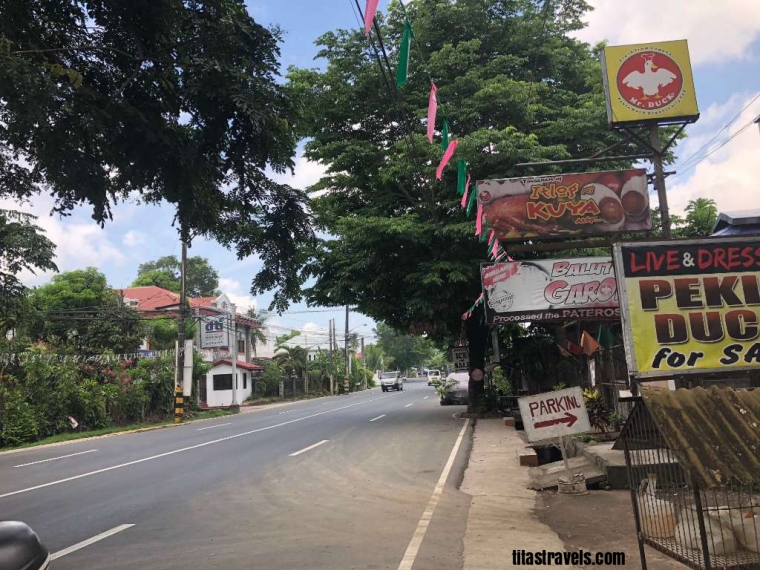
The duck products of Itlog ni Kuya come from the Leo Dator Duck Farm of Victoria, Laguna, owned by Napoleon “Leo” Dator, Jr. and Josephine Dator. The farm started in 1983 with 1,000 birds, and, in 2006, the Peking Duck Farm was added. Together, these two farms comprise what is considered as one of the largest leading duck raisers in the Philippines.2
In the mid-2003, Leo began to use cassava as his sole basal feed. Today, his dry feed ratio is made of 70% cassava, 15% fish meal, and 15% rice bran (which serves as a binder), mixed and consumed daily. He also adds amino acids as well as vitamin-and-mineral premixes. The ducks are dry fed three times a day.2 Supplementing the cassava-based dry feed, Leo mixes fish meal with pond snails (suso) to produce wet feeds that are given to the ducks four times a day.2
Itlog ni Kuya also sells fresh and dressed US-breed, locally grown, Peking ducks.
Breeds include: Cherry Valley of London, Long Island, Philippine Mallard, Dumalaga, and native duck.2
The ducks are not grown free-range; since 1984, they are sheltered in elevated buildings, called “houses,” that have slatted plastic flooring, in order to keep their feeding consistent and eventual production consistent as well, even during the rainy season.2
Each “house” has about 2,000 birds, or a density of five birds per square meter. The floor is covered with rice hull.2
The female-male ratio is 10:1 and the females remain productive for two years, with selective culling as the practice to keep only productive ducks. Unlike in layer chickens, duck eggs should be fertilized because they are used primarily for balut5 and salted egg processing.2
Leo has ready-to-lay birds in different areas, including the provinces of Bulacan, Isabela, Nueva Ecija, Pampanga, Pangasinan, Quezon, Quirino and Tarlac.2
So here some of the duck products offered by Itlog ni Kuya2, depending on the outlet/branch:
- Organic salted egg – different sizes
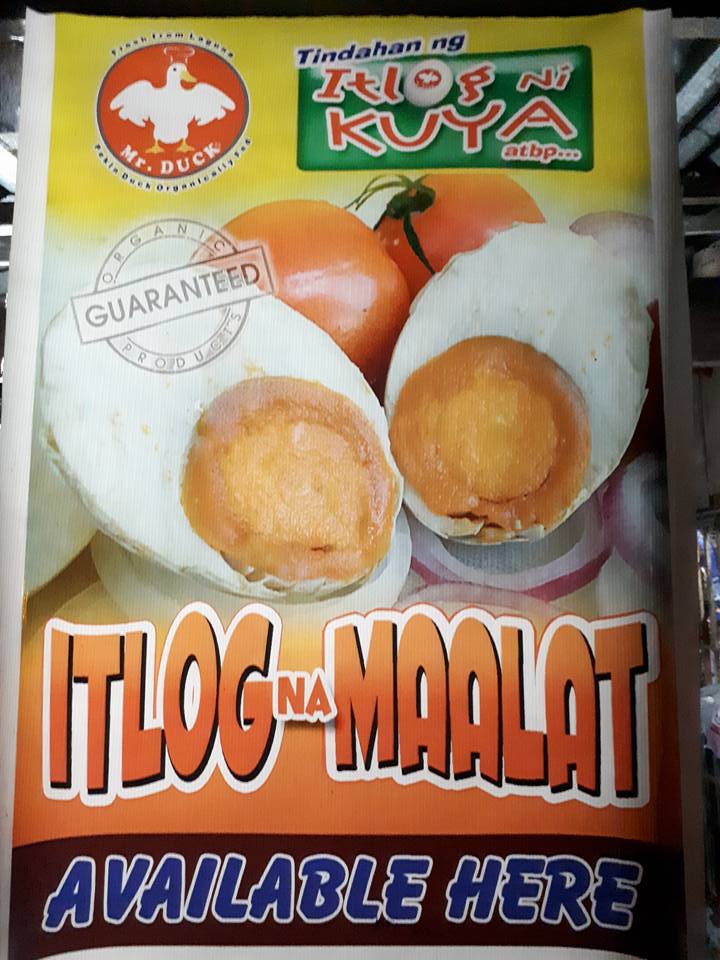
2. Balut5 and penoy6 from the Facebook account, Tindahan ng ItlogniKuya –Tarlac branch
from the Facebook account, Tindahan ng ItlogniKuya –Tarlac branch
3. Dressed duck
4. Fresh and Dressed Peking Duck – the duck is grown within 50-60 days for meat, with an average live weight of 3.3 kilos
5. Crispy Fried Kinulob Peking Duck – the duck is cooked in ten herbs and spices for three hours until tender, roasted then deep-fried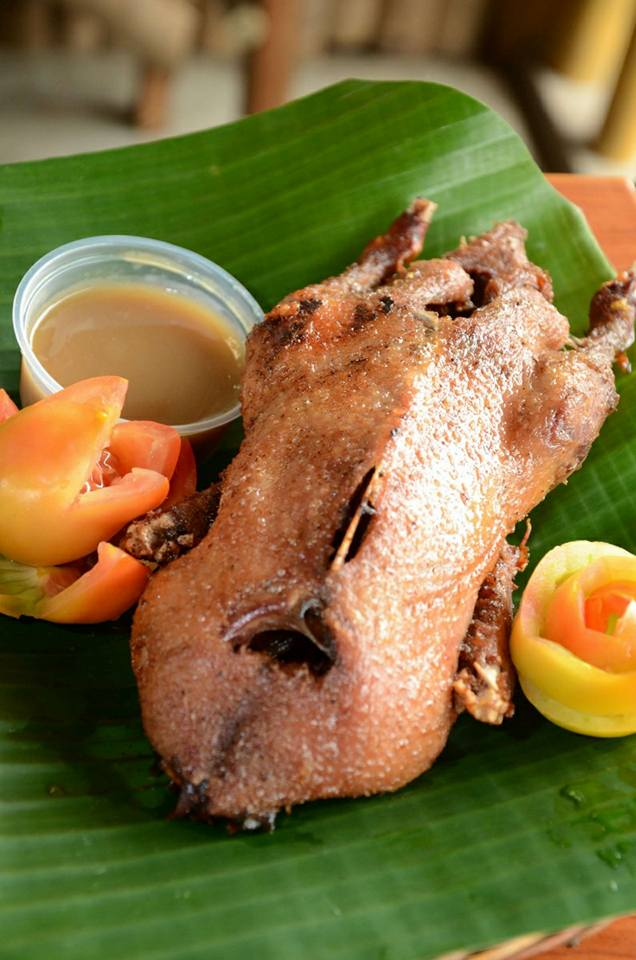 from the Facebook account, ItlogniKuya – Antipolo and San Pedro Laguna
from the Facebook account, ItlogniKuya – Antipolo and San Pedro Laguna
6. One-day old duckling, ordered in advance
7. Duck Ham (November till the Christmas season)
8. Organic Salted Egg Potato Chips
Have I convinced you to try its salted egg? Are you craving for it now? Here are some of its outlets:
- Purok 3, Barangay Banca Banca, Victoria, Laguna – 09173701158, 09156468134 (orders), 09172424547 (for dealership)
- Barangay Bacnotan, Calamba City, Laguna – 09362044767, 09062011823
- National Highway, Real, Calamba City, Laguna – 09998354711, 09556888354
- By Pass Road, Barangay Lamesa, Calamba City, Laguna – 09953141747
- Pansol, Calamba, Laguna
- Maharlika Highway, San Pablo City – 09175640714
- White Plains, along (former) Katipunan Avenue (beside Libalib’s Garden), Quezon City
- ADB Triangle, Sta. Rosa Road, Barangay Francisco, Tagaytay City – 09276092758
- Francis Square, Doña Julia Vargas Avenue corner Bank Drive, Ortigas Center, Mandaluyong City – 09168763028
- Block 1, Villa Carolina 1 National Highway (beside St. Pedro across Petron Gas Station), Tunasan, Muntinlupa City
- Daleon Street corner Merchan Street, Barangay XI, Lucena City
- Unit 3, Ground Floor, Citadel Building, Fairlane Subdivision corner By Pass Road, San Vicente, Tarlac City, Tarlac, Tarlac – 09664668854
- Lipa, Batangas (in front of Flowers and Greens and Jake’s BBQ)
- Unit 3, Citadel Building, Bypass Road corner Fairlane Subdivision, San Vicente, Tarlac City
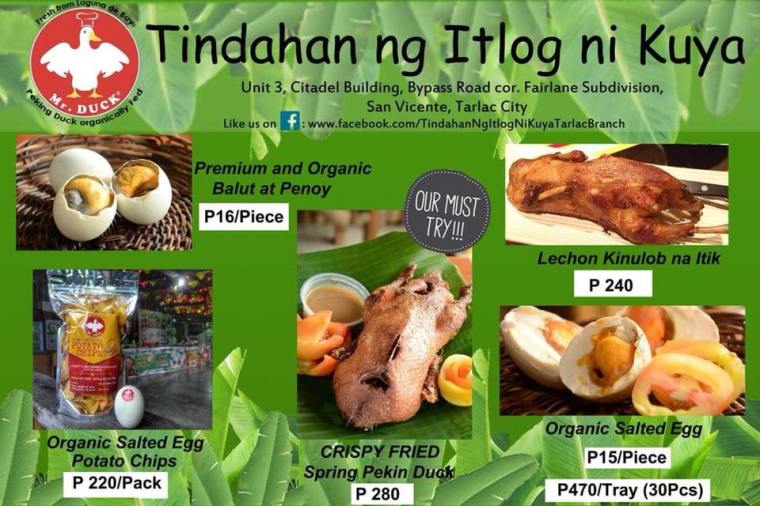 from the Facebook account, Tindahan ng ItlogniKuya –Tarlac branch
from the Facebook account, Tindahan ng ItlogniKuya –Tarlac branch
I have only visited the main outlet, the one located in Victoria, Laguna. It also offers other goodies and even pasalubong1 items. Just zoom the pictures below to see them.
The restaurant, adjacent to the store, is being renovated. I will update this information when I have time to go back. Otherwise, just contact them through the information mentioned.
Visit its official website: www.itlognikuya.com; Facebook: Ang Tindahan ng Itlog ni Kuya
This is not a sponsored post. I paid for all my purchases in this store.
Did you find this post informative? I would like to hear from you. Do leave a comment, either by clicking “Leave a comment” on the upper right corner of this post, or type/enter your comment on the “Leave a Reply” box. Please scroll below and click the “Like” tab, and “Facebook” to share this post. Do not forget to follow me by clicking “Follow” on the lower right corner of your device.
– – – – – – – – – – – – – – – – – – – – – – – – –
The following terms are defined for interested readers, especially non-Filipinos, those with “Senior-Moments”, and those too busy or lazy to Google such terms:
1Pasalubong is the Filipino tradition of travelers bringing gifts/souvenirs from a destination they visited to people back home. The term is also used to refer to the gift/s purchased as such. Information is from the Wikipedia page “Pasalubong”.7
3Fiddlehead fern (Athyrium Esculentum)8, called pako in the Philippines, is grown along the banks of streams or rivers. This vegetable fern is commonly sold in bundles at a very affordable price, about 3 bundles for a hundred Philippine pesos. It is abundant during the rainy season and can be eaten raw (but it is best to blanch it before using it as a fresh salad ingredient) or cooked.
4“Victoria, Laguna,” accessed May 27, 2018, https://en.wikipedia.org/wiki/Victoria,_Laguna.
5Balut, or balot, is a popular Filipino delicacy, often sold as street food through vendors during nightfall, typically repeated shouting on a low-high tone: “Baluuuut, Penoy, Baluuuut”. It is a boiled or steamed (14-21 day-old, ideally 17 day-old) fertilized duck egg with a developing embryo inside. The contents are eaten directly from the shell, with salt, or a chili-garlic-vinegar mixture. The rounded end of the balut is opened just enough for the person to place a pinch of salt and sip the precious broth surrounding the embryo. The shell is then peeled to enjoy the yolk and young chick. The partially-developed embryo bones are soft enough to chew and swallow as a whole. The white albumen may be consumed, depending on the incubating period, but when it is tough and rubbery in texture, it is not eaten. Information is from Wikipedia page “Balut”.9
6Penoy is another Filipino street delicacy, like balut5, but the duck’s egg is unfertilized or not properly developed after 9-12 days, even after undergoing the incubation period, according to the Wikipedia page “Balut (food)”.9 Penoy is only semi-developed and is sold, along with balut, through vendors at night. Bottomline, penoy is an unfertilized balut. There are two kinds of penoy: a soupy kind called “masabaw” and the other is dry, called “tuyo”. The latter looks, smells and tastes like a regular hard-boiled egg. Both can be eaten just like balut, with salt or vinegar mix. Vendors use a pencil to place a mark on the shell of the two kinds of penoy, like a horizontal dark line and a vertical line for the other.
7“Pasalubong,” accessed May 27, 2018, https://en.wikipedia.org/wiki/Pasalubong.
9“Balut (food),” accessed May 27, 2018, https://en.wikipedia.org/wiki/Balut_(food).









2 thoughts on “Pinoy Delight: SAVORING SALTED EGGS OF ITLOG NI KUYA”